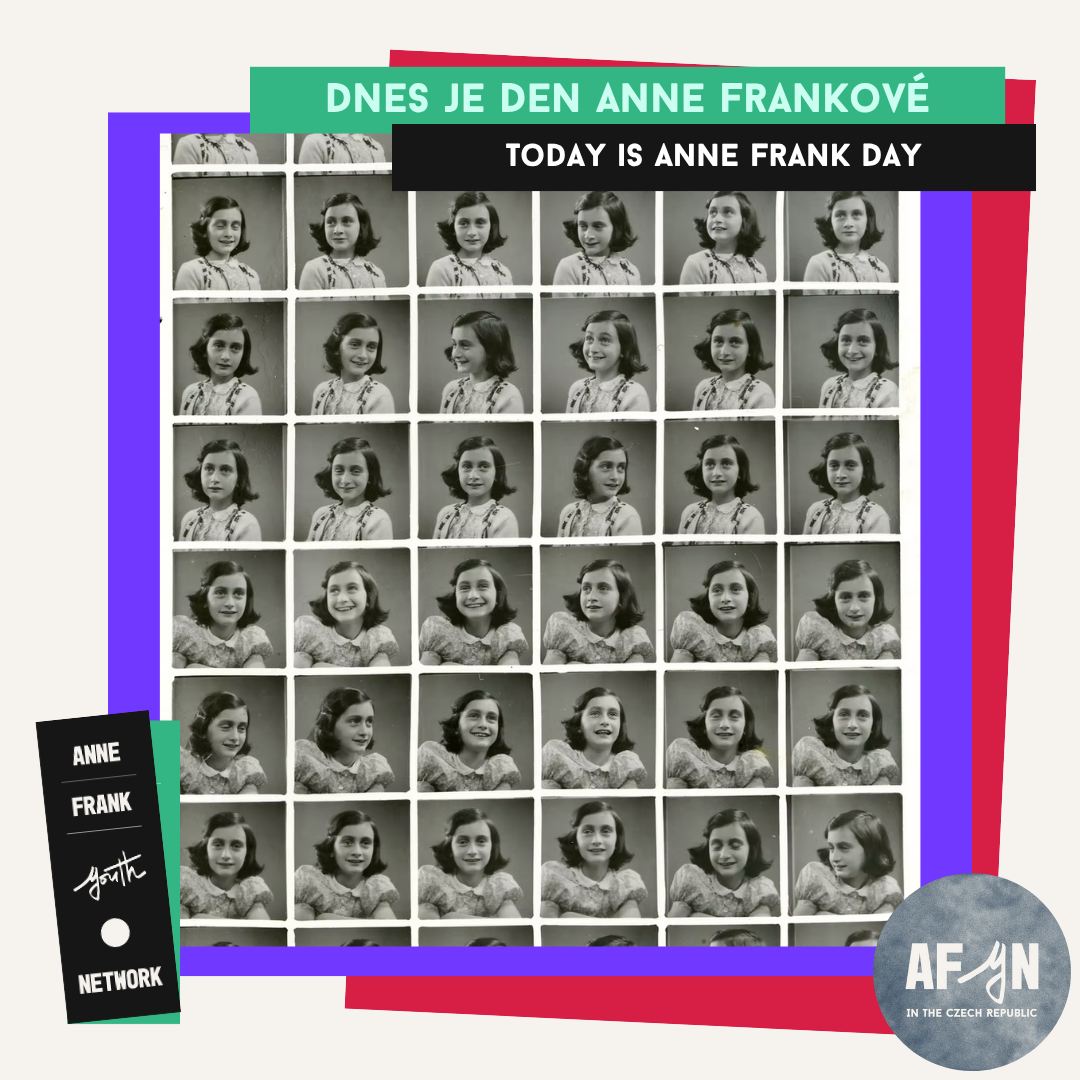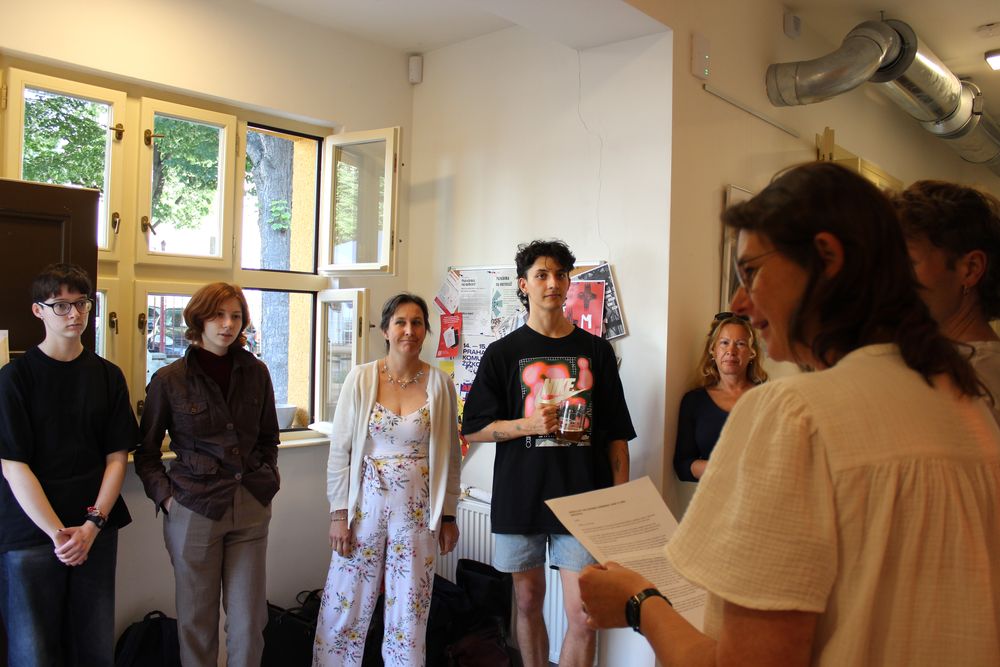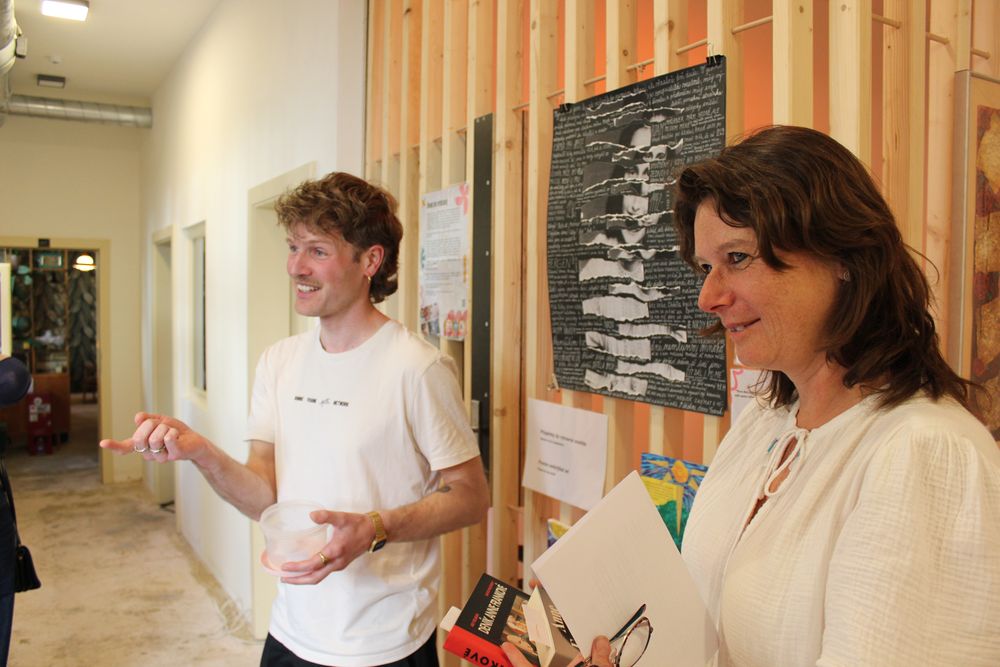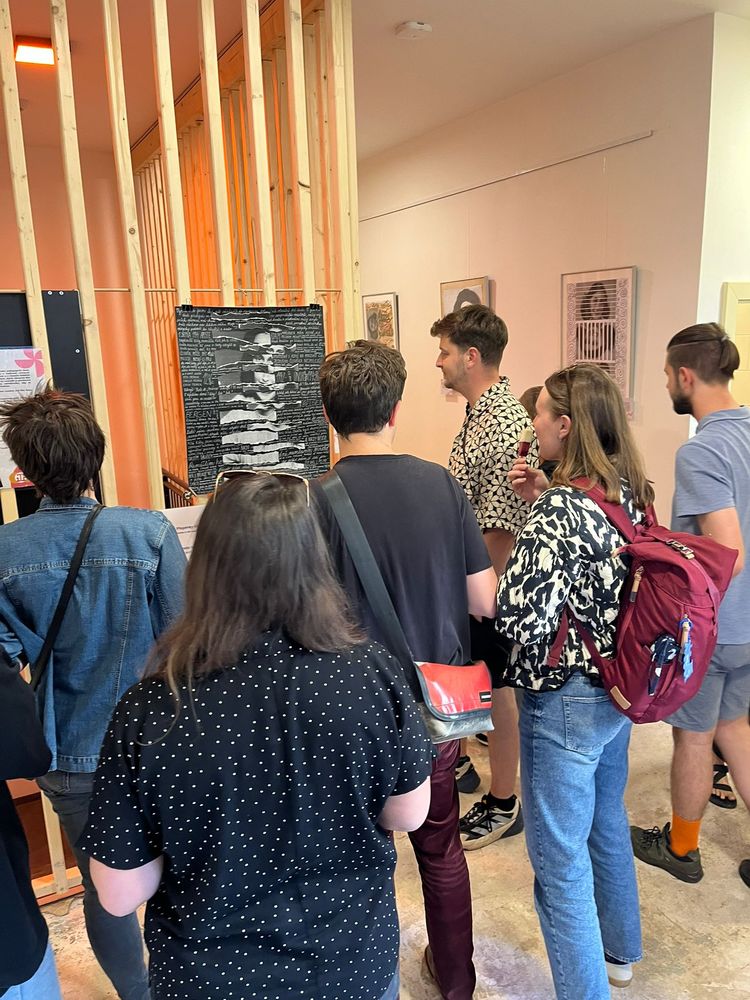Anne Frank Day
02. 07. 2025

Yesterday we celebrated Anne Frank's legacy in a creative way by showcasing the artworks submitted by talented contributors at Žižcafé Therapy.
We were ecstatic to welcome some of the contributing artists as well as many interested people who came to witness the Vernissage. Thomas Elmecker and Marie Smutna held a speech in English and Czech highlighting the importance of Anne Frank Day and explaining how and why Anne came to be remembered and revered around the world:
„Dear guests,
Together with Thomas Elmecker, we would like to welcome you to the opening of the exhibition dedicated to the memory of Anne Frank. Why today, why Anne and why here?
On 12 June 1929, 96 years ago here in the ancient German city of Frankfurt am Main, she was born into the family of Otto and Edith Frank, a Jewish family that had lived here for many generations, as the second daughter named Annelies Marie Frank, who decades later would be known literally to the whole world.
As we work with the story of Anne and her family, this is what we learn about Anne from her pupils and students: she was a happy, versatile, restless, friendly girl who loved to skate, meet her friends and attract attention. She was lively and uninhibited. Sometimes insufferable. Very often at the center of the action and organizer of memorable events.
History was in the making. And so from 1941 onwards, this is what today's students would say about her: she was always being herself, or trying to be. But she was also Jewish. So she had to leave her school. And many of her friends. She wasn't allowed to skate anymore. She wasn't allowed to have a bicycle, in Amsterdam – can you understand? She had to wear a star visibly sewn on her clothes, and with that star her world shrank. By June 1942, one would say of her that she became the enthusiastic owner of a diary. A month later, she became an outlaw - hiding with her family and other family friends in a secret hideout in central Amsterdam. But she was also the one who, along with others in hiding, enjoyed the care of brave helpers. At the time, Anne wrote in her diary, among other things, the following: Believe me, when a person is locked up for a year and a half, there are days when it is too much. Regardless of justice or gratitude, feelings cannot be warded off. To ride my bike, to dance, to whistle, to look at the world, to feel young, to know that I am free, I long for that, and yet I must not let it show, for what would it look like if all eight of us here began to wail or put on disgruntled faces, where would it lead? December 24, 1943
By the spring of 1944, one would certainly have said she was becoming an aspiring writer, rewriting her diary and preparing her book The Back House. From August 1944 she was captured and imprisoned, deported, exposed to the terrible conditions of Westerbork, Auschwitz and Bergen-Belsen. From the winter of 1945 onwards, devoid of hope, exhausted, sick and finally dying.
But history moved on. And here we are today, holding a brand new Czech edition of The Secret Annex in our hands and admiring collages on the walls created by students from a secondary school in Krnov, who were guided through the exhibition Let Me Be Who I Am – The Life Story of Anne Frank by their classmates. The exhibition was loaned to the Czech Republic by the Anne Frank House in Amsterdam.
And why do young people still have the need and desire to remember Anne, 96 years after her birth? It is because Anne was able to give hope even in the environment into which she was involuntarily thrown. She was 15 years old when she wrote in her diary:
That's the trouble nowadays: ideals, dreams, beautiful expectations barely have time to grow up before the most horrible reality strikes and destroys them completely. It is a great miracle that I have not given up all my expectations, for they seem absurd and unworkable. Yet I cling to them, in spite of everything, because I still believe that people are good at their core. It is absolutely impossible for me to base everything on death, horror and confusion.
And we would like to carry on her message, which she expressed in the spring of 1944 as follows:
One day this terrible war will pass, one day we will be human beings again, and not just Jews! Tuesday 11 April 1944
May we be able to learn from these words of a 15-year-old girl and be able to see each other first and foremost as human beings, wherever and whenever we were born.
We thank Žižkostel and Café Therapy for their extraordinary helpfulness in preparing the exhibition. We are very happy to be able to spread this message here, in a place associated with humanity and support for the weak and vulnerable.„
Afterwards we held our raffle to reward three participants for their work. Congratulations to all the winners. And thanks for everyone's contribution.
You can visit the exhibition throughout the next couple of months. Here is the address: Žižcafé Therapy - Žerotínova 1520/33, 130 00 Praha 3-Žižkov.
Thank you for your participation, everyone coming and a big thanks to Žižcafé Therapy for letting us use their space to exhibit the artworks.




Read also
- Remember the Past, Shape the Future – International Youth Forum 2025, a recap by Anička
- News from Prague 02/2025
- Workshop Just an Ordinary Day for MIIC – 22.7.2025
- Alpine Peace Crossing
- Visit from the APC
- GEDENKDIENST
- We have new books!
- Commemoration of the victims of the Holocaust in the Treblinka labour camp
- Commemorative act in Lety u Písku
- Opening of the Museum of Survivors in Brněnec







